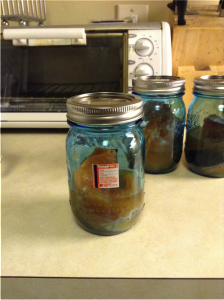Ben Raymond is an MS student at North Carolina State Universit yand self-proclaimed beer aficionado, focusing on food safety through social media, barf banter, and creating new foods.
Raymond writes:
As I wait impatiently for my girlfriend to come back from work in Boston, I’m hoping the freezing rain and sleet will hold off until later tonight. We have a three-hour drive this afternoon to Vermont, to visit my family for Thanksgiving.
Ben Chapman forwarded me a piece from the L.A. Times blog (thanks Michele -ben) on cooking a Thanksgiving dinner in the dishwasher (because I’ve become the dishwasher-cooking-food-safety guru of our group).
If you can’t seem to keep your Thanksgiving turkey moist in the oven, you may want to try your dishwasher. Yes, people have been using the kitchen washing machine to cook proteins and fish since the 1970s, but famed chef David Burke insists you can also use it to cook the star of your Thanksgiving meal.
But before you start shoving your entire turkey in the dishwasher, Burke’s recipe calls for two boneless turkey breasts, not the entire bird. The meat and herbs are packed tightly in plastic wrap then sealed in Tupperware containers before hitting the top shelf of the dishwasher for three cycles or about 3 hours and 25 minutes.
This cooking technique is getting some play in the social mediaverse as a way to make moist, tender chicken, fish, or even beef –sort of a sous vide for the suburbs (without the thermal immersion circulator).
Earlier this fall I did a quick and dirty test of this technique in my own dishwasher. With some nifty water-proof stainless data-loggers, I’ve run few cycles in the dishwasher to see if you can safely cook various proteins. Is it a safe method? The data I’ve generated points to, unsurprisingly, sort of.
Salmon cooks nicely and reaches a safe (and tender) time and temperature combination as suggested 145° F. Even poultry may be cooked safely in the dishwasher (at least in my home, no promises for any other setup), but only if you have expensive tools to monitor the cooking process. The data shows the proteins were held at temperatures below 165° F, but still hot enough and for sufficient time to effectively be cooked (as per FSIS’ appendix A. As a home cook, armed with a tip sensitive digital thermometer, the meat is unlikely to ever register the recommended 165° F internal temperature.
 There’s lots of variability though. Other dishwashers may be hotter than mine, or not (we have very hot water in my house, over 145° F from the tap).
There’s lots of variability though. Other dishwashers may be hotter than mine, or not (we have very hot water in my house, over 145° F from the tap).
All of this effort the chicken I cooked in my dishwasher was gross. It never got hot enough for the proteins to really cook and move past the rubberyish texture of raw of chicken. I like my steaks medium rare, but poultry? No thanks. In my house we will be sticking with our traditional, yet boring, oven to roast our Thanksgiving bird.
